15 Parsley Companion Plants for a Healthier, Stronger Garden
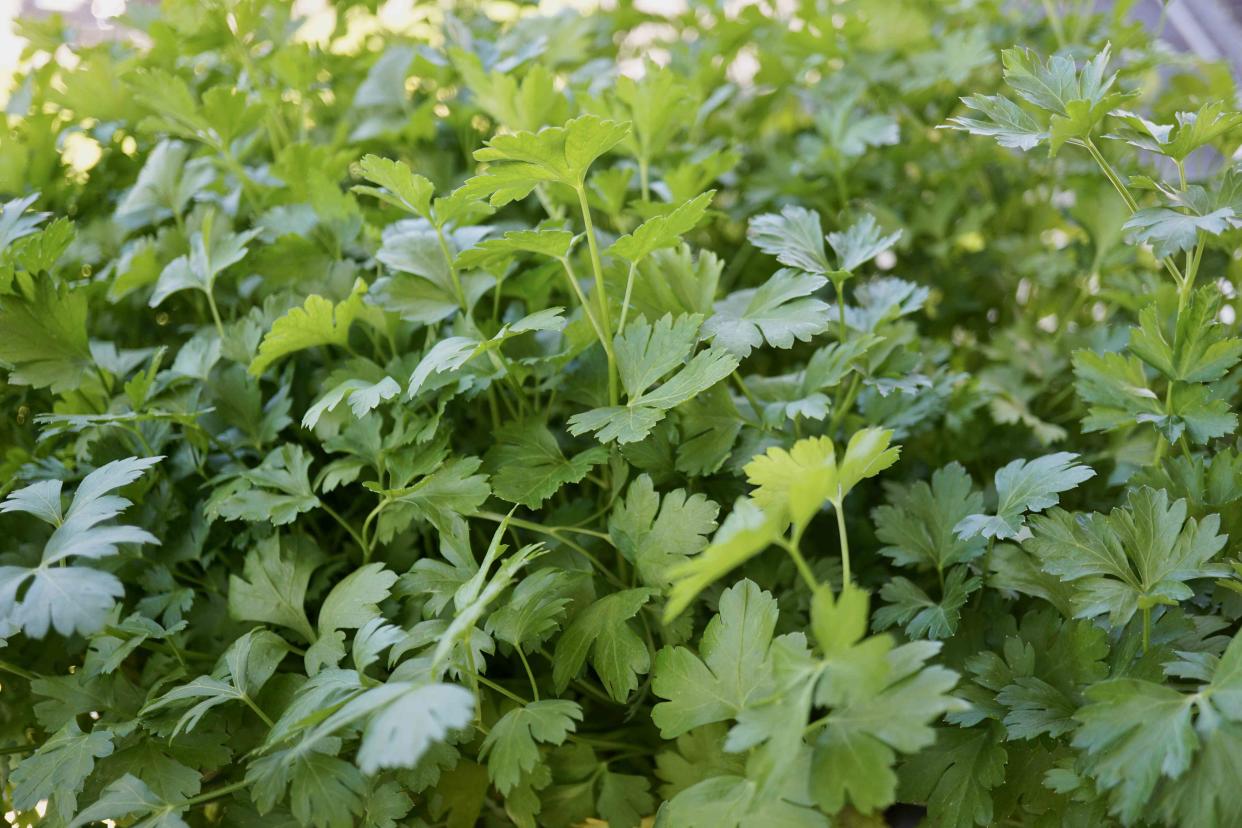
Liudmila Kiermeier / Getty Images
Parsley (Petroselinum crispum) is a culinary herb grown for its pungent, fragrant leaves. There are three main types of parsley: French (curly leaf), Italian (flat-leafed), and Hamburg (grown for its parsnip-like root).
If you're planting this biennial herb in your garden, consider adding some companion plants, which bring out the best in each other and can help prevent common pest and disease issues. When allowed to go to seed, parsley will attract hoverflies to your garden, which are known to eat aphids, thrips and other destructive insects.
What Is Companion Planting?
Companion planting is the strategic planting of a crop with another crop to gain a mutual advantage in production, flavor, or protection from pests.
Like most herbs, parsley grows best in full sun, and can tolerate some light shade. When looking for companion plants, it's best to look for ones that thrive in the same conditions. Learn which herbs, vegetables, fruits, and flowers make the best parsley companion plants.
15 Best Parsley Companion Plants
Asparagus
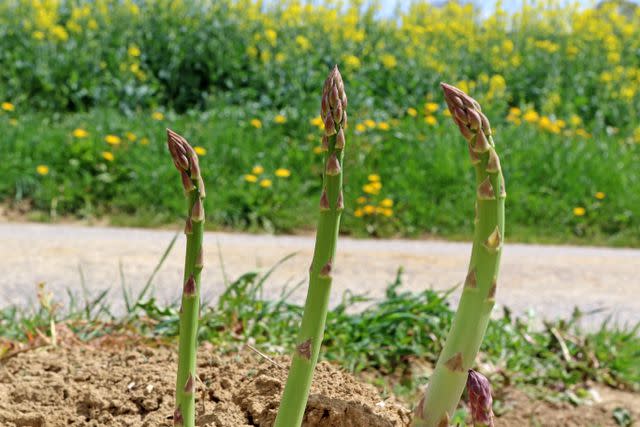
Chris6 / Getty Images
When planted with parsley, asparagus grows much more vigorously. Parsley helps stimulate foliage growth in asparagus, which is a perennial plant that will grow back and can be harvested every year if properly cared for. Parsley's strong aroma also deters asparagus beetles, helping to reduce infestations.
Name: Asparagus (Asparagus officinalis)
USDA Hardiness Zones: 3-10
Light: Full sun
Soil: Sandy, loamy
Tomatoes
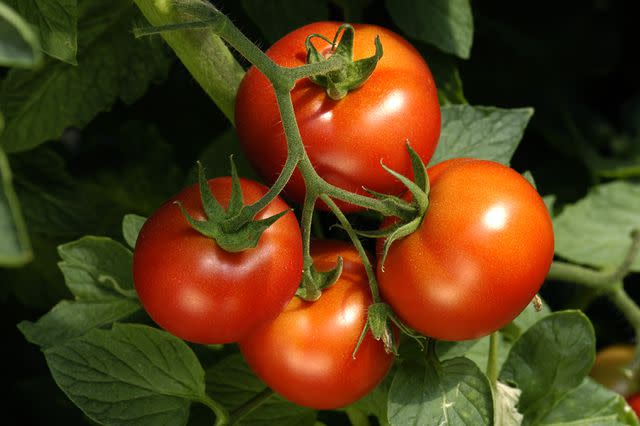
hdagli / Getty Images
Parsley and tomatoes make a great pair in any garden. Parsley attracts beneficial insects like hoverflies that feed on aphids, luring them away from tomatoes.
Name: Tomato (Solanum lycopersicum)
USDA Hardiness Zones: 3-10
Light: Full sun
Soil: Sandy, loamy
Peppers
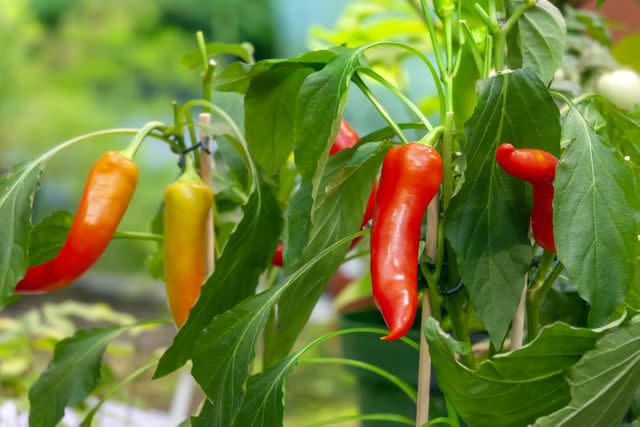
TatianaMironenko / Getty Images
Pepper plants tend to attract pests such as earworms, aphids, beetles, and more, but planting parsley nearby can help to combat them. When parsley flowers, its white blooms attract parasitic wasps, ladybugs and other beneficial insects that feed on the unwanted insects.
Name: Pepper, capsicum(Capsicum annuum)
USDA Hardiness Zones: 9-11
Light: Full sun
Soil: Loamy, well-drained
Basil
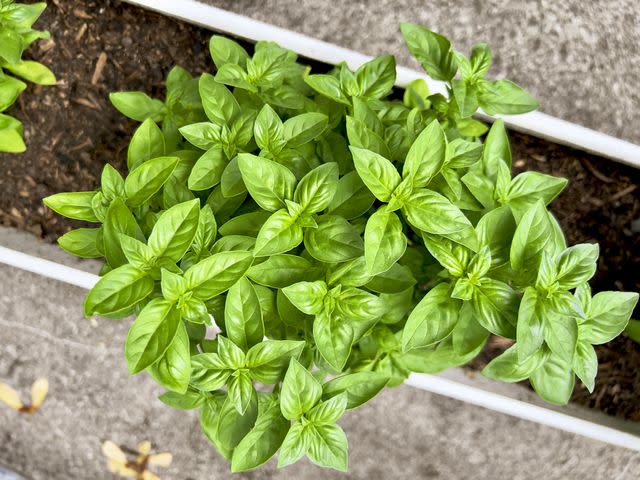
Feifei Cui-Paoluzzo / Getty Images
Both common culinary herbs, basil and parsley also require the same growing conditions—full sun and well-drained soil—making them ideal companions. Parsley attracts beneficial insects, while basil is known to repel unwanted ones such as mosquitoes and flies.
Name: Basil, sweet basil (Ocimum basilicum)
USDA Hardiness Zones: Perennial in 7-9; annual elsewhere
Light: Full sun, partial shade
Soil: Loamy, rich, well-drained
Chives
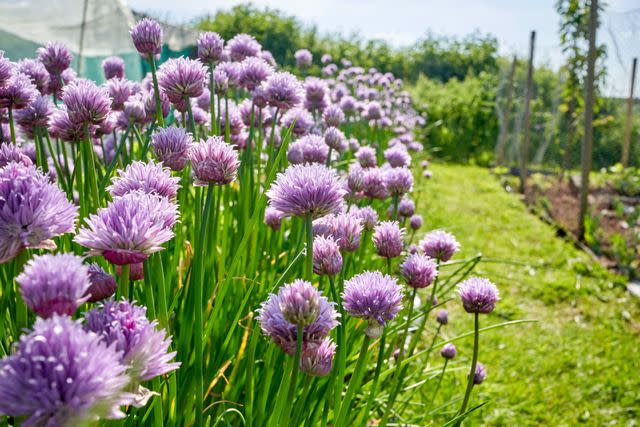
blue sky in my pocket / Getty Images
Chives are an easy-to-grow allium that produces attractive purple flowers that, like the rest of the plant, are edible. Parsley repels the onion maggot, a common pest that feeds on plants in the onion family below the ground, affecting their root networks.
Name: Chives, common chives (Allium schoenoprasum)
USDA Hardiness Zones: 3-9
Light: Full sun, partial shade
Soil: Loamy, sandy
Nasturstium
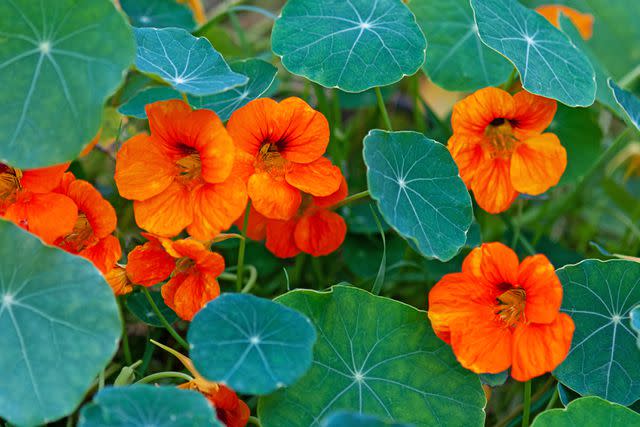
Nadya So / Getty Images
Planting flowers like nasturtium near parsley not only enhances the aesthetic appeal of your garden, it can help boost parsley's pest-deterrent properties. Plus. both plants are edible.
Name: Nasturtium (Tropaeolum spp.)
USDA Hardiness Zones: 9-11
Light: Full sun
Soil: Moist, well-drained
Beans
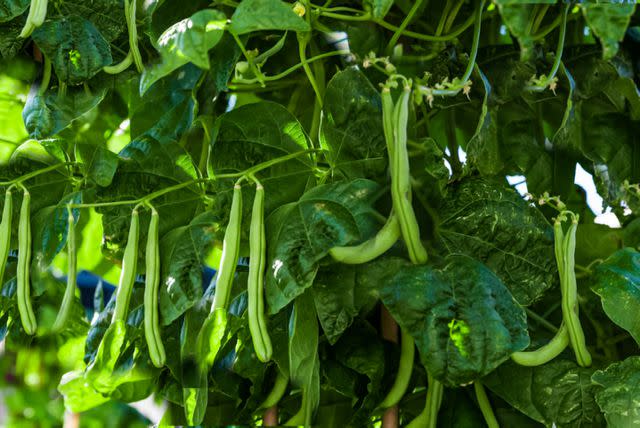
The Spruce / K. Dave
Beans of all kinds grow well with an array of plants. Legumes, including bean plants, fix nitrogen in the soil, which benefits parsley and helps intensify its green color. In return, the scent of parsley helps deter bean pests.
Name: Common bean, green bean, snap bean, string bean, French bean (Phaseolus vulgaris)
USDA Hardiness Zones: 2-11
Light: Full sun
Soil: Loamy, sandy, well-drained
Corn
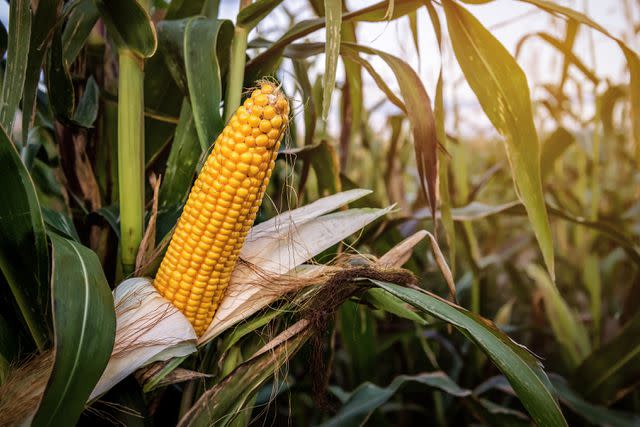
vovashevchuk / Getty Images
Corn attracts cutworms, earworms, and armyworms that wriggle through the corn husks to get to the kernels inside. Planting parsley throughout rows of corn can help attract beneficial insects that feed on these worms and prevent damage to the crop.
Name: Corn, maize (Zea mays)
USDA Hardiness Zones: 7-9
Light: Full sun, partial shade
Soil: Loamy, sandy, well-drained
Apples
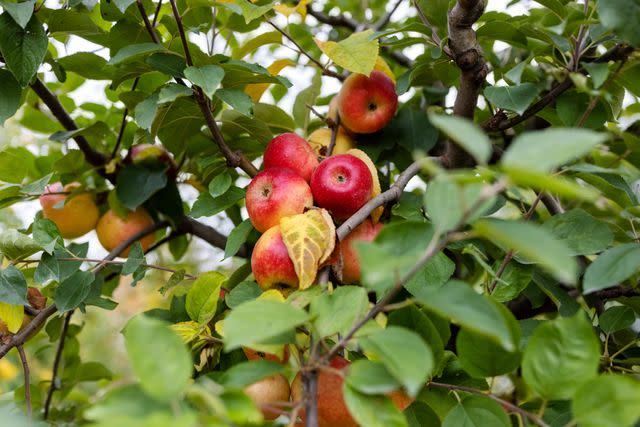
Luis Alvarez / Getty Images
Apple trees attract the destructive codling moth that feeds inside apples and ruins the tree's fruit crop. To keep these unwanted pests away, plant a ring of parsley around the trunk of your apple tree. Parsley attracts tachinid flies, which will attack the codling moth in its pupa stage.
Name: Apple (Malus domestica)
USDA Hardiness Zones: 3-8
Light: Full sun
Soil: Moist, well-drained
Pears
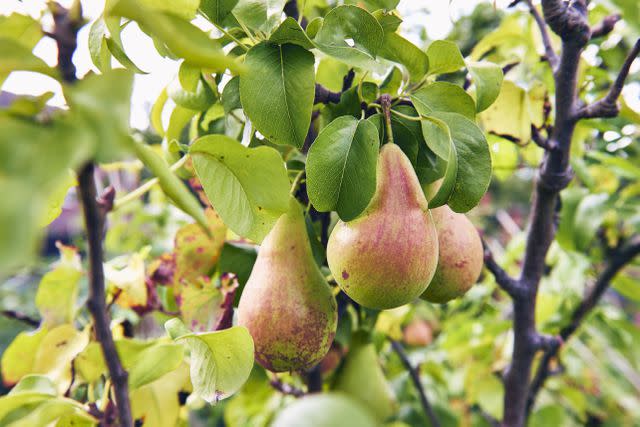
Tara Moore / Getty Images
Like apple trees, pear trees can also be affected by codling moths and spongy moths. Both of these pests can be deterred by parasitic wasps and parasitic flies that flowering parsley attracts.
Name: Pear, common pear, European pear (Pyrus communis)
USDA Hardiness Zones: 5-9
Light: Full sun
Soil: Loamy, sandy, clay, well-drained
Peas
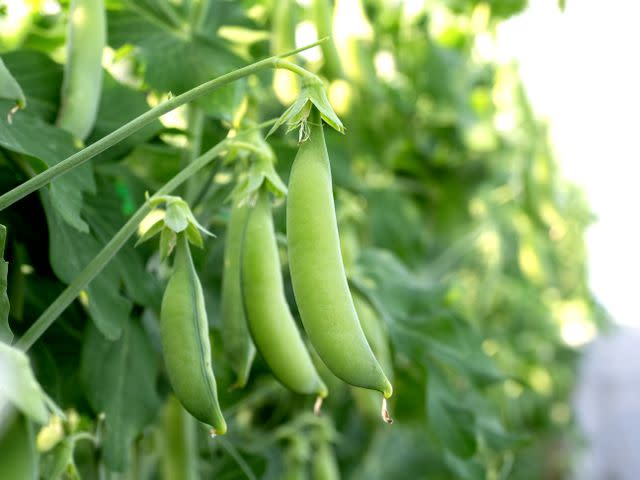
y-studio / Getty Images
Peas are a nitrogen-fixing crop that will make parsley grow fuller, lusher, and greener. Parsley flowers attract tachinid flies, which feed on cutworms, a common legume pest.
Name: Pea, garden pea (Pisum sativum)
USDA Hardiness Zones: 2-11
Light: Full sun, partial shade
Soil: Moist, well-drained
Cabbage
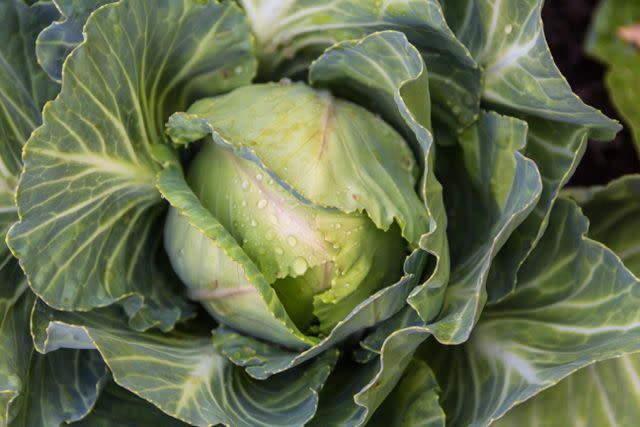
Costache Hurgoi / Getty Images
Parsley is a great cabbage companion plant, as the herb's flowers attract beneficial insects that prey on cabbage worms and cutworms, which can cause substantial damage to cabbage. When harvested together, they can both be used in an array of recipes.
Name: Cabbage (Brassica oleracea)
USDA Hardiness Zones: 2-11
Light: Full sun
Soil: Loamy, well-drained
Cauliflower

Mypurgatoryyears / Getty Images
Similar to cabbage, cauliflower is a member of the brassica family, and can easily become affected by cabbage worms and cutworms. Planting parsley nearby lessens the risk of an infestation.
Name: Cauliflower (Brassica oleracea)
USDA Hardiness Zones: 2-11
Light: Full sun
Soil: Well-drained
Marigolds
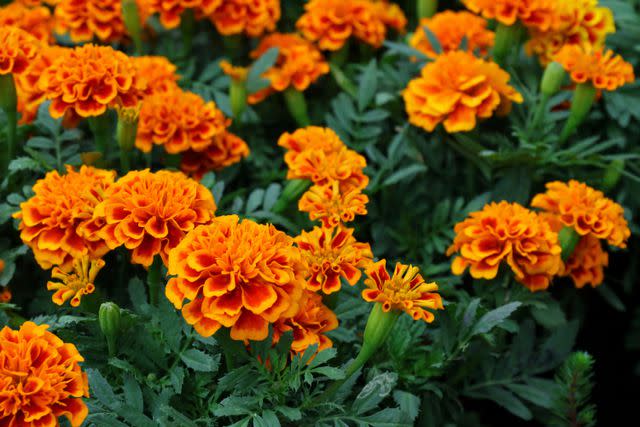
Passakorn_14 / Getty Images
Many flowers make great companion plants for parsley. Marigolds are a popular choice for gardens, as they deter common garden pests like nematodes, tomato hornworms, cabbage worms, squash bugs, and more. When paired with parsley, they make quite the pest-fighting duo.
Name: Marigolds (Tagetes spp.)
USDA Hardiness Zones: 7-9
Light: Full sun, partial shade
Soil: Loamy, sandy, well-drained
Roses
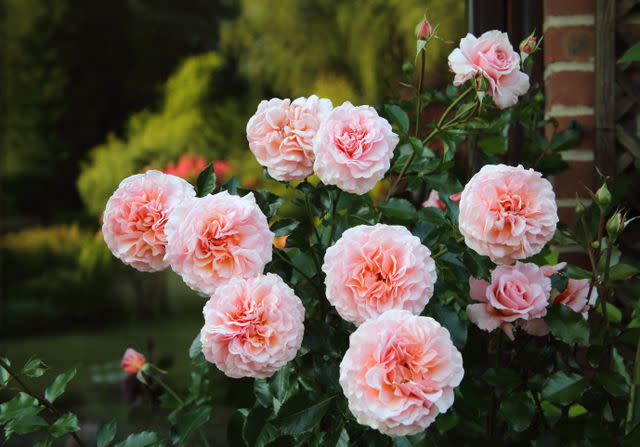
Rosemary Calvert / Getty Images
A flowering rose bush might seem like a strange addition to an herb or vegetable garden, but their blooms can attract an array of pollinators. However, roses are prone to an array of pests, including aphids, wasps, flies, and beetles. Planting parsley near roses can help deter these unwanted insects, and roses are believed to benefit parsley by making the scent of its flowers sweeter.
Name: Rose (Rosa spp.)
USDA Hardiness Zones: 2-11
Light: Full sun
Soil: Loamy, well-drained
Plants You Shouldn't Plant With Parsley
Not all plant combinations will thrive together. To keep your parsley healthy and thriving, avoid planting the following, considered to be the worst companion plants for parsley.
Mint (Mentha spp.)
Carrot (Daucus carota)
Lettuce (Lactuca sativa)
Dill (Anethum graveolens)
Cilantro (Coriander) (Coriandrum sativum)
Fennel (Foeniculum vulgare)
Frequently Asked Questions
What herbs grow best with parsley?
Many—but not all—herbs are good companion plants for parsley. It grows well with basil, chives, lavender, lemon balm, lovage, marjoram, oregano, sage, savory, and thyme. Avoid planting parsley near mint, dill, and cilantro, as they can easily cross-pollinate.
Where should I plant parsley in my garden?
Parsley grows best in a sunny spot that receives direct light for at least six to eight hours per day. You can plant parsley in garden beds or containers.
Can you plant marigolds and parsley together?
Yes, marigolds and parsley are great companion plants that enhance each other's pest-deterring properties.
Read Next: 21 Best (and 7 Worst) Companion Plants for Tomatoes
Read the original article on The Spruce.

